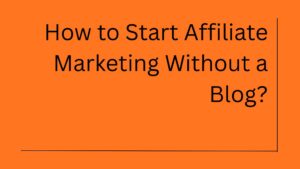Your marketing AI just discriminated against an entire demographic.
Your personalization algorithm accidentally exposed customer data.
Your automated campaign violated GDPR and now you’re facing a six-figure fine.
Sound far-fetched? It’s happening right now to marketing teams who thought their AI was working perfectly.
This isn’t about companies with malicious intent. These are regular marketing teams using popular AI tools from major vendors. Tools that promised to boost conversion rates and personalize customer experiences. Tools that worked exactly as advertised – until they became legal nightmares.
Here’s the uncomfortable truth: your marketing AI is probably creating compliance risks right now. You just don’t know it yet. Every algorithm making customer-facing decisions represents a potential liability. Every automated campaign processing personal data creates regulatory exposure.
The Hidden Dangers Lurking in Your Marketing AI
Marketing departments love AI. You probably use it for customer segmentation, email personalization, ad targeting, or content recommendations. Maybe you’ve automated your entire lead scoring process.
But here’s what keeps me up at night: most marketers have no idea what their AI is actually doing.
Your recommendation engine might be systematically excluding certain customer groups from premium product suggestions. Your email personalization could be making assumptions based on gender or race that violate anti-discrimination laws. Your chatbot might be collecting personal data in ways that breach privacy regulations.
The worst part? You won’t know until it’s too late.
What Makes Marketing AI Different (And More Dangerous)
Marketing AI touches your customers directly. Unlike internal business processes, your AI systems interact with real people who can sue you, boycott you, or report you to regulators.
Every algorithm you deploy becomes a potential liability because:
- Customer-facing decisions carry higher legal risks
- Personal data collection creates compliance vulnerabilities
- Biased targeting can trigger discrimination lawsuits
- Privacy violations result in immediate regulatory penalties
- Brand reputation damage spreads faster than ever
Your finance team’s AI might make an internal error. Your marketing AI makes public mistakes that become viral scandals.
The Governance & Compliance Nightmare You Didn’t Sign Up For
Remember when marketing was about creative campaigns and conversion rates? Now you need to understand GDPR, CCPA, PIPEDA, and dozens of other regulations that change monthly.
Your AI systems must comply with:
Data Privacy Laws
- GDPR’s right to explanation requirements
- CCPA’s data deletion mandates
- State-level privacy regulations
- International data transfer restrictions
Anti-Discrimination Rules
- Fair housing advertising standards
- Equal opportunity employment laws
- Financial services fairness requirements
- Healthcare accessibility mandates
Industry-Specific Regulations
- FDA guidelines for health product marketing, like HCP marketing.
- FTC rules for advertising claims
- Financial advertising disclosure requirements
- Children’s privacy protection standards
Each violation carries fines that can bankrupt marketing budgets. Or entire companies.
Real Marketing AI Disasters (That Could Be You)
A major retailer’s recommendation algorithm consistently showed lower-priced items to customers from certain zip codes. The pattern looked suspiciously like redlining. The lawsuit cost them $2.3 million.
An insurance company’s chatbot collected health information from website visitors without proper consent. The GDPR fine was €4.2 million. Their marketing director was fired.
A streaming service’s personalization engine created content categories that reinforced racial stereotypes. The social media backlash lasted months. Subscriber churn spiked 40%.
These weren’t evil companies trying to discriminate. They were regular marketing teams using popular AI tools without proper oversight.
What AI Governance Tools Actually Mean for Marketers
Forget the technical jargon. AI governance for marketers means having systems that let you:
See what your AI is doing
- Track which customers get which recommendations
- Monitor how algorithms segment your audience
- Understand why certain decisions get made
- Identify patterns that might indicate bias
Control your AI’s behavior
- Set rules about fair treatment across demographics
- Limit data collection to compliant methods
- Define boundaries for automated decisions
- Override problematic AI recommendations
Prove you’re following the rules
- Generate audit trails for regulatory inspections
- Document your bias testing procedures
- Show compliance with privacy requirements
- Demonstrate fair treatment practices
Fix problems before they explode
- Get alerts when AI behaves unexpectedly
- Test for discriminatory patterns regularly
- Monitor customer complaints about AI decisions
- Update models when regulations change
Think of it as insurance for your AI investments. You hope you’ll never need it, but you’ll be grateful it exists when something goes wrong.
Types of Governance Tools That Actually Help Marketing
The market is flooded with AI governance solutions. Most are built for data scientists and compliance officers. You need tools designed for marketing realities.
Customer Journey Monitoring Tools
These track how AI affects real customer experiences. You can see if certain groups get different treatment at any touchpoint.
Key features for marketers:
- Visual customer journey mapping with AI decision points
- Demographic analysis of AI-driven experiences
- Real-time alerts for suspicious patterns
- Integration with marketing automation platforms
Bias Detection for Marketing Use Cases
Generic bias tools don’t understand marketing contexts. You need solutions that recognize discriminatory patterns in campaigns, not just hiring algorithms.
Marketing-specific capabilities:
- Ad targeting fairness analysis
- Content recommendation bias detection
- Price discrimination identification
- Promotional offer distribution monitoring
Privacy Compliance Automation
Privacy laws change constantly. Manual compliance checking doesn’t scale when you’re running hundreds of campaigns.
Essential features:
- Automated GDPR consent validation
- Data minimization enforcement
- Cross-border data transfer monitoring
- Privacy policy alignment checking
Marketing Attribution Governance
Your attribution models influence million-dollar budget decisions. Biased or inaccurate attribution creates massive financial risks.
Core functionality:
- Attribution model transparency tools
- Bias detection in conversion tracking
- Customer journey accuracy validation
- Budget allocation impact analysis
The Tools Marketing Teams Actually Use
Let’s talk about dozens of marketing leaders about their governance setups. Here are the solutions that work in real marketing environments.
For Small Marketing Teams (Under 50 people)
You need simple tools that don’t require data science PhDs to operate.
Fiddler AI offers marketing-friendly bias monitoring. Their dashboard shows which customer segments get different treatment. Setup takes about a week, not months.
DataRobot’s MLOps platform includes marketing attribution governance. You can track how AI influences your funnel metrics and catch attribution bias before it skews your budget decisions.https://www.fiddler.ai/
Microsoft’s Responsible AI Toolkit integrates with common marketing platforms. It’s perhaps the easiest way to add governance to existing campaigns without rebuilding everything.
For Mid-Size Companies (50-200 marketers)
You have more complex needs but still need tools that marketing teams can actually use.
IBM’s AI Governance suite includes industry-specific templates for marketing use cases. Their retail and financial services modules understand common marketing scenarios.
Google’s Model Cards provide detailed transparency reports for marketing algorithms. You can generate audit-ready documentation for any AI-driven campaign.
H2O.ai combines automated machine learning with governance features. Marketing teams can build compliant models without waiting for data science resources.
For Enterprise Marketing Organizations
You need comprehensive governance that scales across multiple brands, regions, and use cases.
Salesforce’s Einstein Bias Detection monitors all AI decisions within its marketing cloud. If you’re already using Salesforce, it’s a natural extension.
Adobe’s Sensei governance tools integrate across its entire marketing suite. You get consistent oversight from content creation to customer targeting.
AWS and Azure both offer enterprise-grade governance platforms that work with any marketing stack. They require more technical setup but provide unlimited customization.
Implementation Reality Check
Most governance implementations fail because they’re too complex or disconnected from daily marketing work.
Here’s what actually works:
Start with your highest-risk AI applications
Don’t try to govern everything at once. Focus on AI that directly affects customers or handles sensitive data.
Your email personalization probably carries more risk than your internal lead scoring. Your recommendation engine matters more than your A/B testing algorithms.
Choose tools your team will actually use
The best governance tool is the one people actually open every day. Complex dashboards that require training sessions won’t get adopted.
Look for tools that integrate with your existing workflow. If your team lives in HubSpot, find governance solutions that work within HubSpot.
Make governance part of campaign planning
Don’t treat governance as an afterthought. Build bias checking and compliance validation into your campaign development process.
Create checklists that teams follow before launching AI-driven campaigns. Include governance requirements in your campaign briefs.
Train your team on AI risks
Your content creators and campaign managers need to understand how their decisions create AI governance issues.
A copywriter who understands bias might catch discriminatory patterns in personalized content. A campaign manager who knows privacy law might spot data collection problems before launch.
The Money Side of Marketing AI Governance
Let’s talk costs. Because this stuff isn’t free and you need to justify the budget.
Direct Costs
Governance tools typically cost $500-5000 per month depending on your team size and feature requirements. Enterprise solutions can run $50,000+ annually.
Staff training adds another $5,000-20,000 depending on team size and current knowledge levels.
Implementation services range from $10,000 for simple setups to $100,000+ for complex enterprise deployments.
Hidden Costs
Governance slows down campaign launches initially. Expect 20-30% longer development cycles while teams adjust to new processes.
Some AI applications might need rebuilding to meet governance standards. Budget for potential model redevelopment.
Compliance monitoring requires ongoing attention. Someone needs to review governance reports and respond to alerts.
Return on Investment
A single discrimination lawsuit can cost millions in settlements and legal fees. GDPR violations start at 4% of annual revenue.
Brand damage from AI scandals affects customer acquisition costs and lifetime value. Recovery can take years.
Regulatory fines are just the beginning. Legal costs, PR expenses, and lost business multiply the real impact.
One major AI incident typically costs 10-50 times more than implementing proper governance from the start.
Building Your Marketing AI Governance Strategy
You don’t need to become a governance expert overnight. Start with these practical steps.
Week 1: AI Inventory
List every AI system your marketing team uses. Include obvious ones like recommendation engines and hidden ones like automated bidding algorithms.
For each system, identify:
- What customer data it accesses
- How it affects customer experiences
- Which regulations might apply
- Who currently oversees it
Week 2: Risk Assessment
Rank your AI systems by potential impact. Consider legal risk, brand reputation damage, and customer experience effects.
Focus on customer-facing AI that makes decisions about offers, pricing, or content. These carry the highest liability.
Month 1: Quick Wins
Implement basic monitoring for your highest-risk AI. Most governance tools offer free trials or starter plans.
Set up alerts for unusual patterns in customer segmentation or targeting. Create simple audit logs for AI-driven decisions.
Month 2-3: Tool Selection
Research governance solutions that fit your specific marketing stack and use cases.
Run pilots with 2-3 different tools. Test them with real campaigns, not just demo data.
Get feedback from the marketers who will actually use these tools daily.
Month 4-6: Full Implementation
Roll out your chosen governance platform across all marketing AI systems.
Train your team on new processes and compliance requirements.
Establish regular governance reviews and reporting schedules.
Common Implementation Mistakes (And How to Avoid Them)
The marketing industry has seen the same governance mistakes repeated across dozens of marketing organizations.
Mistake 1: Choosing tools based on features instead of usability
The most sophisticated governance platform is worthless if your team doesn’t use it.
Prioritize ease of use over feature completeness. You can always upgrade later.
Mistake 2: Trying to govern everything at once
Comprehensive governance takes time to implement properly.
Start with your riskiest AI applications and expand gradually.
Mistake 3: Treating governance as a one-time project
AI models drift over time. Regulations change. Customer expectations evolve.
Plan for ongoing governance maintenance and updates.
Mistake 4: Ignoring integration requirements
Governance tools that don’t work with your marketing stack create friction and abandonment.
Test integration thoroughly before committing to any platform.
Mistake 5: Underestimating training needs
Marketing teams need to understand both AI risks and governance tools.
Budget sufficient time and resources for proper training.
The Future of Marketing AI Governance
Regulations are getting stricter, not looser. The EU’s AI Act will affect any company targeting European customers. US states are passing their own AI oversight laws.
Customer expectations for transparency and fairness are rising. B2B buyers increasingly ask about AI governance during vendor evaluations.
Your competitors are implementing governance systems. The ones who get it right will have competitive advantages in regulated industries and privacy-conscious markets.
Marketing AI governance isn’t going away. The question is whether you’ll implement it proactively or reactively after something goes wrong.
Final Words: Taking Action (Because Reading Doesn’t Fix Liability)
You’ve read about the risks. You understand the solutions. Now you need to actually do something.
This Week: Create an inventory of your marketing AI systems. You can’t govern what you don’t know you have.
Next Month: Pilot a governance tool with your highest-risk AI application. Start small but start now.
Next Quarter: Implement comprehensive governance across your marketing AI portfolio.
The cost of action is measured in thousands of dollars and a few months of effort.
The cost of inaction is measured in millions of dollars and years of reputation damage.
Your AI isn’t going to govern itself. And your customers won’t forgive you for assuming it was safe without checking.
The choice is yours. But the liability is definitely yours.

The Chief Author and Editor at Intothecommerce. As a seasoned expert in digital marketing, I direct the site’s strategic content and ensure every piece meets the highest industry standards. My insights drive our coverage on SEO, paid media, and cutting-edge marketing technology.






1 thought on “Is Your AI Marketing a Liability? A Guide to Governance Tools”
The next time I read a blog, I hope that it doesn’t disappoint me as much as this one. I mean, I know it was my choice to read, but I actually thought you’d have some simple and boring marketing piece, but yours is, so interesting to say. All I hear are a bunch of great things, which is very advanced to discuss about the governance tools.